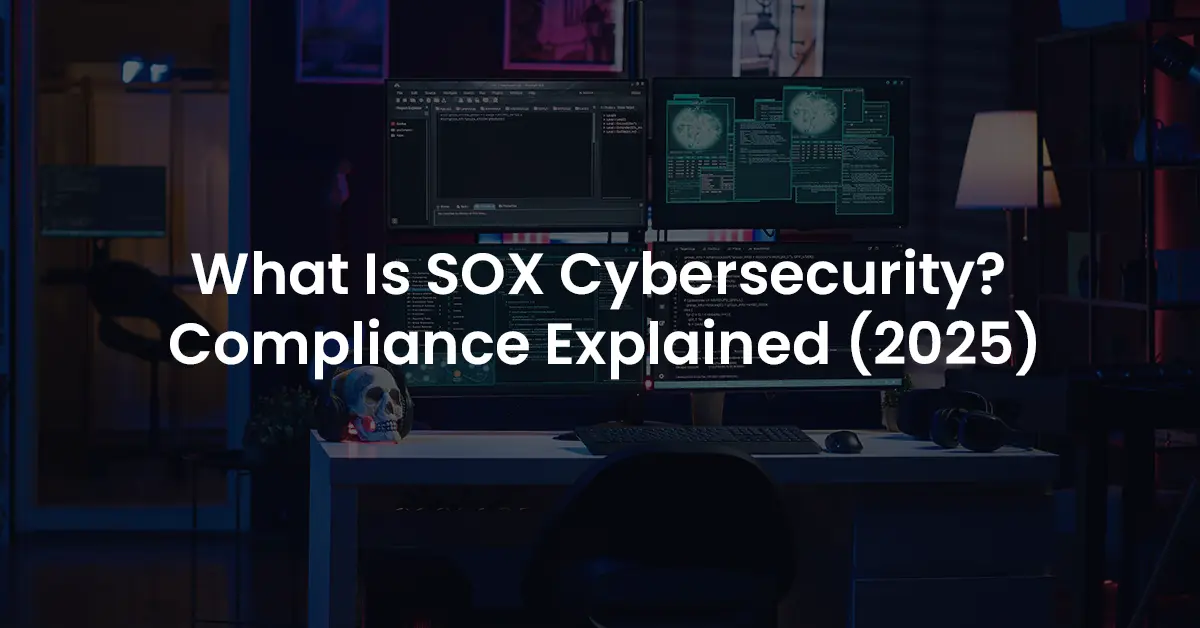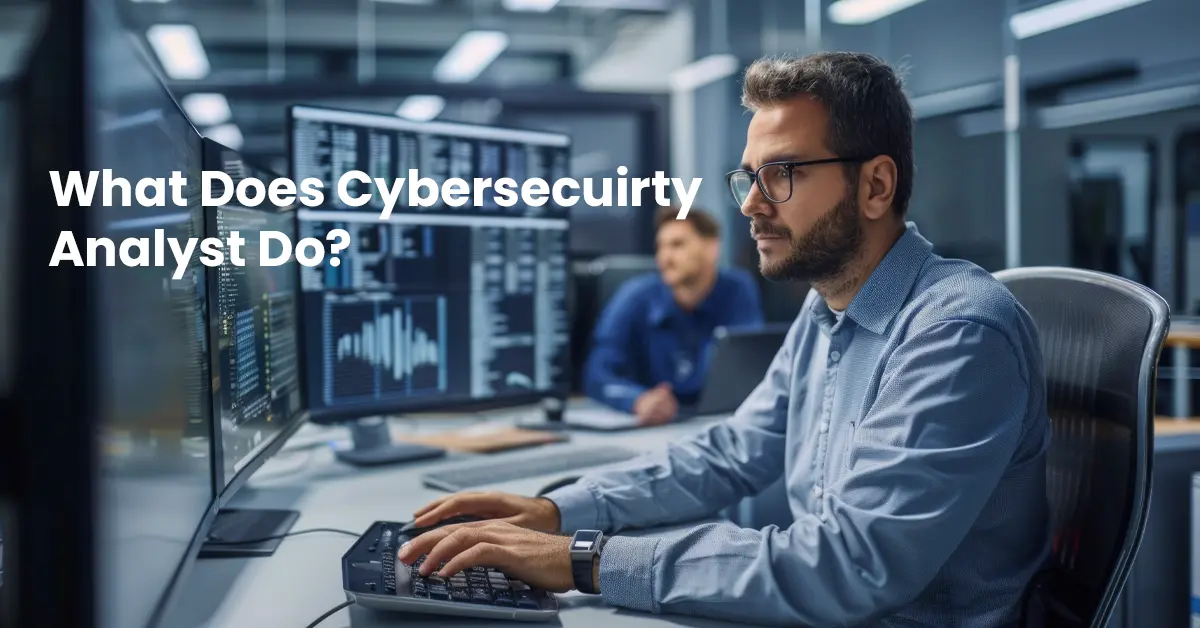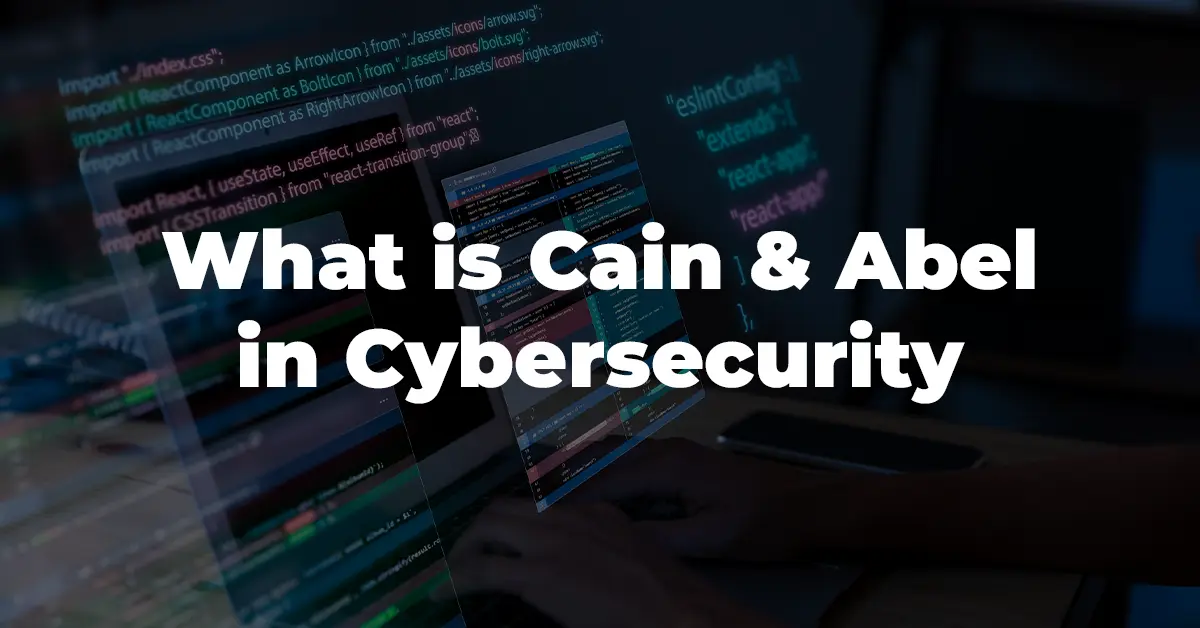In 2024, the Google Search API leak revealed what many cybersecurity professionals and SEOs had long suspected: data integrity, user trust, and system-level transparency are central to how major platforms like Google evaluate authority and reliability. While this leak shook the SEO world, it also reinforced a truth that compliance teams have understood for years: security isn’t just an IT problem, it’s a governance issue.
This is exactly where the Sarbanes-Oxley Act (SOX) comes in. Originally designed to prevent corporate fraud, SOX is now just as relevant in today’s digital, cloud-based ecosystem as it was during the paper-driven scandals of the early 2000s. As financial reporting and IT systems have become inseparable, SOX compliance has evolved into a cybersecurity priority.
If you’re running a business, managing IT infrastructure, or overseeing compliance, understanding SOX cybersecurity isn’t optional. It’s a critical component of operational integrity, investor trust, and legal accountability. In this article, we’ll break down what SOX is, why cybersecurity is now a core part of its enforcement, and what your organization must do to stay protected and compliant.
What Is the Sarbanes-Oxley Act (SOX)?
The Sarbanes-Oxley Act, passed in 2002 in response to financial disasters like Enron and WorldCom, was a watershed moment in corporate accountability. Its purpose was clear: to restore investor confidence by improving financial reporting transparency and reducing the risk of fraud.
At its core, SOX requires publicly traded companies to implement internal controls that protect the accuracy and integrity of their financial statements. But in the modern digital era, internal controls are no longer just about accounting workflows they’re about protecting the IT systems that power those workflows.
SOX applies to all U.S. publicly traded companies, certain foreign firms listed on U.S. exchanges, and third-party providers handling financial data. From cloud-based ERPs to internal finance software, any system that touches financial data falls under SOX’s scope. If that system is compromised whether by mismanagement, error, or cyberattack the company may be held accountable under SOX regulations.
What Is SOX Cybersecurity?
As companies moved their financial systems into the cloud and embraced digital transformation, regulators began to treat cybersecurity as an essential part of financial data protection. That’s where SOX cybersecurity comes in: the application of technical and organizational safeguards to ensure the confidentiality, integrity, and availability of financial information in line with SOX’s internal control mandates.
This integration is clearest in three key SOX sections:
Section 302 requires corporate executives to personally certify the accuracy of financial reports and the effectiveness of internal controls. This means if a breach compromises financial data — even if the numbers are unchanged the executives can be held liable for failing to secure the data.
Section 404 focuses on the design and assessment of internal controls over financial reporting. For IT, this translates into secure user access, encrypted databases, activity logging, version control, and strong authentication systems. A misconfigured server or exposed cloud storage could mean noncompliance even if the financial figures remain untouched.
Section 409 mandates the timely disclosure of any material changes that impact financial conditions and that includes cybersecurity incidents. If a data breach affects a company’s ability to report accurate financials, the company must disclose it promptly or risk legal and reputational fallout.
Core SOX Cybersecurity Requirements
To comply with the Sarbanes-Oxley Act, organizations must implement a range of cybersecurity measures that directly support financial data integrity. While SOX does not provide a prescriptive list of IT controls, the following areas are commonly expected in SOX-aligned audits and IT security reviews:
1. Data Access Controls
SOX requires companies to tightly regulate who can access financial systems and data. This means implementing role-based access controls (RBAC), regularly reviewing user permissions, and restricting administrative privileges to only those who absolutely need them. Unauthorized access to financial data can compromise reporting accuracy and trigger compliance violations.
2. Change Management Procedures
Every update to financial software, configuration, or code must be tracked, reviewed, and auditable. SOX mandates that businesses document changes to systems that affect financial reporting whether it’s a database update, a code push, or a patch installation.
3. Data Backups and Disaster Recovery
Financial data must be backed up regularly and stored securely, with tested procedures in place for recovery in case of a system failure or breach. Without these safeguards, companies risk losing critical information required for SOX compliance.
4. Logging and Monitoring
SOX-compliant systems must log user activity, system changes, and access events. These logs provide audit trails that prove financial data hasn’t been tampered with — and that unauthorized access was prevented or caught early.
5. User Authentication and Password Policies
Ensuring only authorized individuals can access financial data starts with strong authentication mechanisms. SOX auditors expect robust password policies, multi-factor authentication (MFA), and automatic lockouts after repeated failed attempts.
SOX vs. Other Cybersecurity Frameworks
While SOX addresses financial controls, it overlaps heavily with IT and cybersecurity. Still, it’s important to understand how it differs from other regulatory standards.
SOX Is Not a Cybersecurity Framework — But It Requires Cybersecurity Controls
Unlike frameworks like ISO 27001 or NIST, the Sarbanes-Oxley Act is not a cybersecurity framework. It doesn’t tell you how to configure firewalls or which encryption algorithms to use. Instead, SOX focuses on ensuring financial data is accurate, secure, and auditable and expects IT controls to support that outcome.
This makes SOX unique. It’s results-oriented, requiring companies to prove their systems protect the integrity of financial data even if they use different tools or platforms to get there.
SOX vs. GDPR, HIPAA, and ISO 27001
- GDPR (EU) focuses on protecting personal data and privacy rights of EU citizens. It applies to marketing, customer data, and consent — not financial reporting.
- HIPAA (US) governs healthcare data, ensuring patient privacy and secure handling of medical records.
- ISO 27001 is an international cybersecurity standard focused on building a comprehensive Information Security Management System (ISMS).
While GDPR, HIPAA, and ISO 27001 all include cybersecurity controls, SOX is unique in its focus on the protection of financial data for publicly traded companies. However, adopting ISO 27001 or NIST frameworks can help meet SOX requirements more easily — especially in complex IT environments.
Why SOX Cybersecurity Matters in 2025
The stakes for cybersecurity and SOX compliance are higher than ever. In 2025, multiple factors are converging to make SOX cybersecurity not just important but essential for corporate survival.
Rise in Financial Cybercrime and Ransomware
Hackers aren’t just targeting personal data they’re going after financial systems directly. Ransomware attacks on publicly traded companies can encrypt financial databases, disrupt ERP systems, or manipulate data that’s later used in SEC filings. This puts SOX compliance and executive accountability at direct risk.
Cloud and SaaS Integration
Most modern businesses rely on cloud-based platforms from QuickBooks Online to SAP, NetSuite, or Workday. But storing financial data in the cloud comes with shared responsibility. You may outsource your infrastructure, but you can’t outsource compliance.
Companies must ensure that cloud environments meet SOX cybersecurity expectations, including access controls, audit trails, and encryption.
Stricter SEC Enforcement and Cyber Disclosure Rules
In recent years, the U.S. Securities and Exchange Commission (SEC) has increased scrutiny of cybersecurity practices especially when a breach could affect investors. New rules require timely reporting of material cybersecurity incidents and evidence of internal controls.
Failing to disclose a breach or not having systems in place to detect one can now lead to civil penalties, lawsuits, and even criminal investigations.
Common Pitfalls in SOX Cybersecurity
Many organizations fall into the trap of treating SOX compliance as a static checklist rather than a living system that must adapt to evolving risks. One of the most common issues is the absence or poor maintenance of audit trails. Without comprehensive logs tracking who accessed what and when, it’s nearly impossible to prove that financial data has remained intact and unaltered , a requirement for SOX reporting. Missing or fragmented logs also weaken your ability to investigate potential breaches and satisfy audit requests.
Another frequent pitfall is inadequate access control. Organizations often fail to restrict financial data access strictly to authorized personnel, leading to elevated risks of insider threats or accidental changes. This typically stems from outdated user permissions, a lack of regular access reviews, or failure to implement role-based controls. Even in secure environments, overly broad access rights can be a ticking compliance time bomb.
Perhaps most dangerous is the lack of a formal incident response plan for financial systems. In the event of a breach or unauthorized change, companies must act quickly to isolate, investigate, and report the incident. Without a well-documented and tested plan, teams are left scrambling during critical moments increasing the risk of regulatory violations, delayed disclosures, and data loss.
Lastly, many companies make the mistake of approaching SOX compliance as solely an IT or finance responsibility. In reality, it requires ongoing collaboration between IT security, financial reporting teams, and compliance officers. When these teams operate in silos, miscommunications occur, controls are poorly designed, and critical risks fall through the cracks.
Best Practices for SOX Cybersecurity Compliance
To maintain a strong SOX cybersecurity posture, companies must go beyond minimal compliance and embrace a proactive, integrated approach. A foundational best practice is to perform regular IT audits with SOX in mind. These audits should evaluate whether current systems, policies, and processes align with the expectations for protecting financial data. Issues should be remediated quickly, with documentation that proves due diligence to regulators and auditors.
Implementing role-based access control (RBAC) is another essential step. This involves assigning permissions based on job functions and regularly reviewing user access to ensure that only those with a legitimate need can access financial systems. Removing unused or inherited access rights reduces your risk exposure significantly.
Centralized logging and automated alerting are critical for real-time visibility into system activities. Using a unified logging system allows teams to spot unusual behavior, trace unauthorized access, and demonstrate control effectiveness. Automated alerts can notify security teams of suspicious activities providing early warnings before damage occurs.
Internal controls are only valuable if they’re documented, tested, and maintained. Organizations should establish written policies for every critical process from software updates to backup procedures and conduct routine tests to verify their effectiveness. These tests not only validate security posture but also prepare teams for actual audit scenarios.
Most importantly, successful SOX compliance requires cross-functional collaboration. IT teams must work closely with cybersecurity professionals and financial controllers to design controls that are technically sound, legally compliant, and operationally practical. This collaboration turns SOX from a burden into a business enabler.
Tools & Technologies That Help with SOX Compliance
Technology plays a vital role in simplifying and strengthening SOX cybersecurity efforts. Governance, Risk, and Compliance (GRC) tools such as LogicGate, AuditBoard, and RSA Archer offer centralized dashboards for tracking controls, documenting risks, and automating compliance workflows. These platforms help unify audits, internal documentation, and task assignments improving visibility across departments.
To monitor system events and generate audit trails, many companies rely on Security Information and Event Management (SIEM) platforms like Splunk, LogRhythm, and IBM QRadar. These tools collect logs from across the IT environment and apply real-time analytics to detect anomalies and policy violations crucial for satisfying SOX’s logging and monitoring requirements.
Identity and Access Management (IAM) tools provide a foundation for enforcing RBAC, provisioning and deprovisioning users, and managing privileged access. Solutions such as Okta, Azure Active Directory, and CyberArk help organizations reduce human error, limit unnecessary access, and create audit-ready records of every access request.
Finally, major cloud providers like AWS, Azure, and Google Cloud Platform (GCP) offer compliance-focused dashboards and features tailored for SOX-aligned operations. These include audit logging, access control templates, encryption settings, and continuous compliance monitoring giving cloud-based organizations a head start in meeting regulatory expectations.
Conclusion
As we move deeper into 2025, SOX cybersecurity is no longer a secondary concern, it’s a frontline defense against financial manipulation, data breaches, and regulatory risk. With financial systems now fully digitized and often hosted in cloud environments, the intersection between cybersecurity and compliance has never been more critical.
Maintaining compliance isn’t just a matter of running antivirus scans or storing data in a secure database. It requires cross-team collaboration between finance, IT, and cybersecurity each bringing their expertise to build resilient, auditable, and trustworthy systems. Only through this combined effort can companies protect their financial integrity and uphold public trust.
In the end, SOX cybersecurity is not about ticking boxes it’s about building a culture of accountability, transparency, and security. When done right, it not only safeguards your organization from fines and failures but also reinforces your reputation as a trustworthy, well-governed enterprise.







